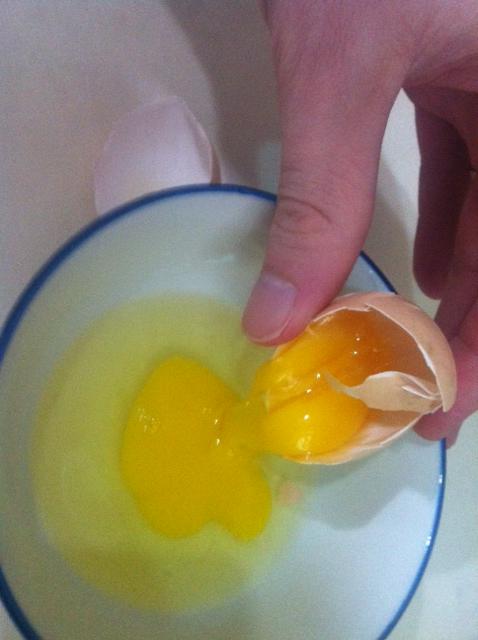Neggs

Eggs — the ones you order at a typical restaurant, at least — come from chickens. Egg Beaters and other “egg substitutes” also, typically, come from chickens; they’re made from egg whites with some other colors, flavors, and spices. But some fake eggs, particularly in China, really are fake — in the sense that they’re not from chickens or any other animal. They’re counterfeits.
China, in recent years, has developed a well-deserved reputation for producing counterfeit goods. Per one report, 70% of the world’s counterfeit goods come from there. Some efforts at fakery are substantial and beyond imagination, such as this incredibly real looking fake Apple store. But fake eggs? That’s a hard one to imagine. How does one create a credible but inedible egg-like “egg?” It barely seems possible.
That’s likely what consumers were wondering when they found cheaper-than-usual eggs at the village market, costing about six cents less per egg than at the grocery store. The deal was too good to be true, of course — these “eggs” looked the part, but weren’t real at all. The shells were mostly paraffin wax; the whites a mix of coagulants, pigments, and an extract from brown algae; and the yolks a mix focused on resin. In short, you don’t want to eat it, but you may not notice until it’s too late.
The good news: the eggs, upon even simple inspection (although you have to take them out of the egg carton), have a few telltale “these aren’t real” signs. First, the shells are smoother than those of real eggs, and show no irregularities in shape. (That’s because they come out of a mold, not out of a chicken.) Second, if you end up cracking one open, you’ll notice that they’re odorless, lacking the distinctive albeit slight smell of real eggs. And finally, the yolk, once poked, quickly runs into the white, as seen above. (Yes, that’s almost certainly a fake egg pictured. The original photo is here and two other pictures can be seen here and here, courtesy of this reddit comment.)
The counterfeit egg industry has few signs of abating, however. Counterfeiters are able to produce about 1,500 such fake eggs per day (each) with a marginal cost around half of what it’d require to make a real egg. The real ones require a farm with chickens, coops, and the like. Thankfully, so far, there have been no reported deaths (or even significant injuries) due to the ingestion of counterfeit eggs.
Bonus Fact: The eggs one buys in an American grocery store can’t be sold in the European Union, and vice versa. Why? The U.S. Department of Agriculture, according to Forbes, requires that eggs be washed before sale. In the EU, though, the law mandates that eggs sold in supermarkets be unwashed.
From the Archives: Inedible Eggs: Why (real) eggs are sometimes really hard to peel when hard boiled.
Related: A dozen fake eggs. They’re just plastic placeholders, though; no fraud is intended by their manufacturer.
